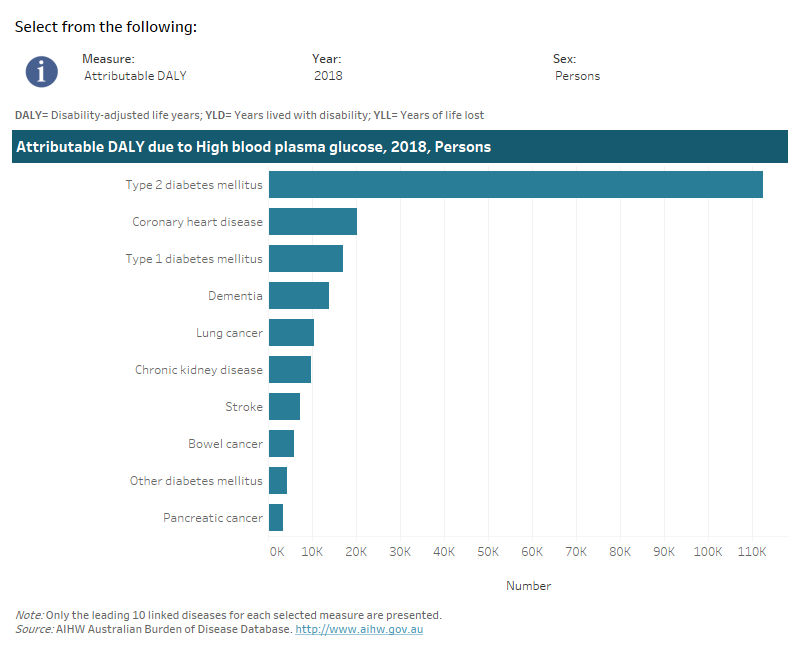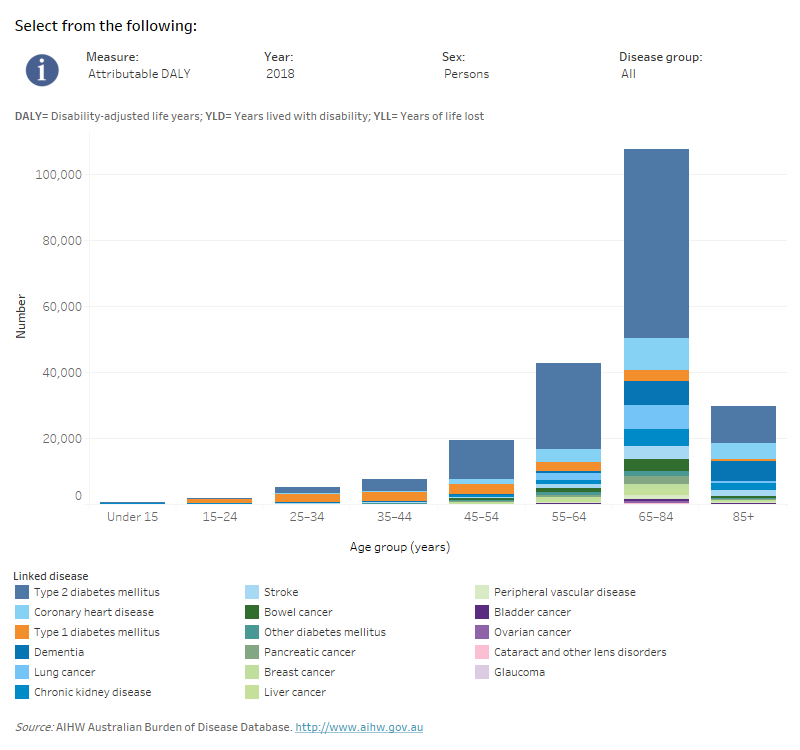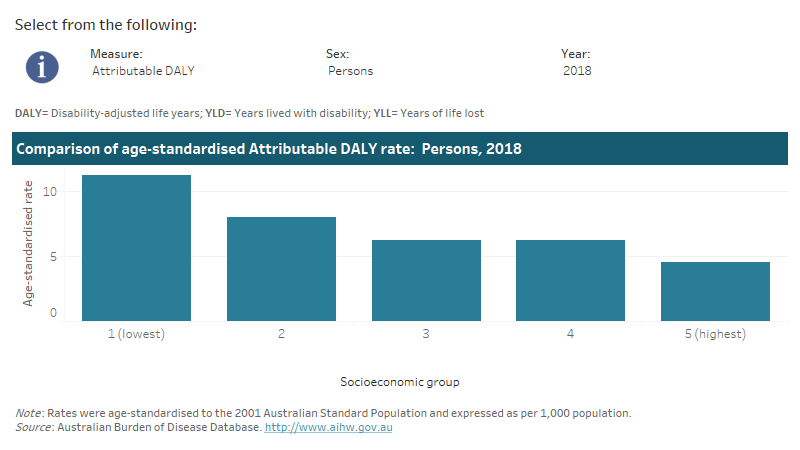High blood plasma glucose
In 2018, 4.3% of the total disease burden in Australia was due to high blood plasma glucose (including intermediate hyperglycaemia and diabetes). High blood plasma glucose was the 6th leading risk factor that contributed to disease burden.
These estimates reflect the amount of burden that could have been avoided if all people in Australia did not have high blood plasma glucose levels (including diabetes and intermediate hyperglycaemia).
High blood plasma glucose was linked to 17 diseases including type 1 diabetes, type 2 diabetes and other diabetes, 7 cancer types, 3 cardiovascular diseases, chronic kidney disease and dementia (see ABDS 2018 Risk factor estimates data table).
How much burden was attributable to high blood plasma glucose?
High blood plasma glucose was responsible for the entire burden of each type of diabetes, 20% of chronic kidney disease burden, 19% of peripheral vascular disease burden and 7% of dementia burden.
Note that the following visualisation displays the top 10 linked diseases due to high blood plasma glucose by the selected measure.
This interactive data visualisation shows the burden attributable to high blood plasma glucose by linked disease. The main section shows a horizontal bar graph which can be customised to report data according to year, sex and measure of attributable burden. Each bar represents the attributable burden of the disease linked to high blood plasma glucose.

How did burden attributable to high blood plasma glucose vary by age and sex?
High blood plasma glucose contributed to disease burden across all age groups.
Total burden due to high blood plasma glucose increased with age, peaking at ages 65–84 in both males and females. Males and females experience a similar amount of disease burden from high blood plasma glucose up to age 34. Between ages 35 and 84 years, males experience 10–70% more burden due to high blood pressure than females.
Of the diseases linked to high blood plasma glucose, type 2 diabetes contributed the most burden from high blood plasma glucose.
This interactive data visualisation shows the amount of burden attributable to high blood plasma glucose by age group and linked disease. The main section shows a stacked bar graph which can be customised to report data according to year, sex, disease group and measure of attributable burden. Each bar represents the attributable burden within a particular age group. Each bar is also split into separate components with each colour representing a disease linked to high blood plasma glucose.

This interactive data visualisation shows the rate of burden attributable to high blood plasma glucose by socioeconomic group. The main section shows a bar graph which can be customised to report data according to year, sex and measure of attributable burden. Each bar represents the attributable burden within a particular socioeconomic group due to high blood plasma glucose.



